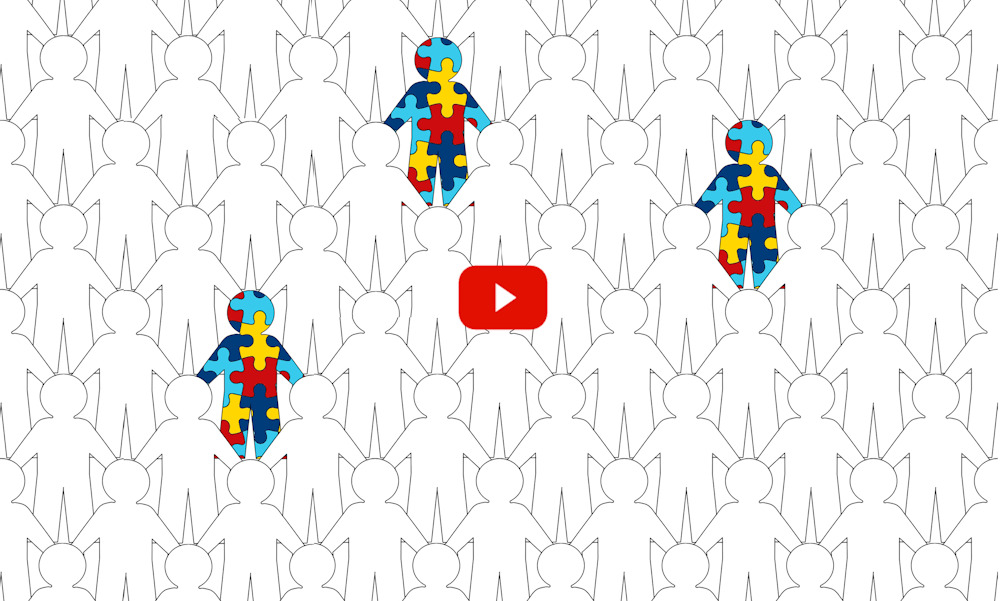Fifty years ago, Congress passed the first law recognizing the civil rights of people with disabilities. Prohibiting discrimination in education, transportation, access to public buildings and facilities, the Rehabilitation Act of 1973 set the stage for a host of legal protections.
The 1975 passage of what is now known as the Individuals with Disabilities in Education Act established that every child, no matter how profound their needs, has a right to a “free and adequate” public education. In 1990, the Americans with Disabilities Act enshrined in law the right of people with disabilities to enjoy the fullest possible access to jobs, housing and other pillars of a life of dignity. It meant they were entitled to have a wheelchair ramp, sign language interpreter or other forms of assistance that would help them literally take a place at the tables where discussions of their needs were underway.
Once included, people with disabilities pushed for a shift in thinking about how disability issues should be framed. In the past, the non-disabled people making decisions about how to meet the needs of people with disabilities employed what was often described as the medical model. The goal was to determine how to make up for physical, neurological and intellectual deficits.
A generation of disabled adults say the premise underlying controversial behavior interventions — to ‘extinguish’ autistic traits — is a dealbreaker.
Today, many disabled people prefer what they call the social model, which instead identifies systemic barriers to participation in society, including ignorance, bigotry and social exclusion. The new goal is to make the environment more inclusive and hospitable to everyone.
Nowhere has this change of attitude been more apparent than among autistic people. Autism, once blamed on poor parenting, is now understood, in scientific terms, to be a neurotype — not a condition resulting from a lack of anything physical or psychological, but a body and brain wired differently. Not only is it impossible to fix or cure autism, many autistic adults say, it’s not desirable; autists have abilities that non-autistic people don’t.
And they are demanding a voice in how their own needs should be met. As the motto of the Autistic Self-Advocacy Network puts it: “Nothing about us without us.”
One flashpoint is applied behavior analysis — long described as the “gold standard” intervention for autism. Developed and nurtured into a multi-billion-dollar industry by neurotypical researchers, parents and service providers, ABA is now the chief therapy recommended when a child is diagnosed as autistic.
America’s most popular autism therapy may not work — and may seriously harm patients’ mental health]
Created in the 1980s, ABA aimed to condition autistic children to act as neurotypically as possible using punishments including slaps, electric shocks and withholding of food. Many parents saw its goals as desirable — autistic youngsters can exhibit behaviors that can exhaust caregivers and teachers, and make friendships difficult, if not impossible. Over the years, ABA has moved away from physical punishment, and many families credit the therapy with helping their child make miraculous strides.
But many adult autists believe even its more recent methods of withholding toys, treats and attention and physically compelling patients to make eye contact — which some find extremely painful — can be extremely damaging to their mental health. Some, who have become autism researchers themselves, have documented harms ranging from dramatically higher incidences of PTSD to a debilitating focus on compliant behavior that impairs participants’ ability to act independently as adults.
And research from, among other sources, a multi-disciplinary team of university scholars and the U.S. Department of Defense — which insures thousands of autistic military dependents who have undergone the treatment — has found the evidence base for ABA thin and of poor quality. This is particularly troubling to critics of ABA, as it is often the only therapy offered to parents, to the exclusion of other, possibly more effective, treatments.
‘If I Knew Then What I Know Now — A Parent’s Autism Story’ (Multicultural Autism Action Network)
During a 2020 address at Drexel University, Julia Bascom, until recently the network’s executive director, offered an example of how changing the prism through which disability is viewed clashes with the most prevalent therapies and services:
“In the medical model, autism means that my senses are disordered. If sounds hurt me, the solution is to fix how my brain is processing those sounds, or teach me how to get used to it, or at least how to hide my discomfort. The problem is located in my body. In the social model, the solution to auditory overload is to give me a pair of headphones.
“The social model also allows us to acknowledge complexity — that the same painful sensitivity might also make my experience with music uniquely transcendent. The same thing that makes wool unbearably itchy might also make water between my fingertips more soothing than anything else in the world. Maybe not all of those things need a ‘solution.’ Maybe autism might need a more nuanced approach than has traditionally been offered.”
There are also concerns that trying to alter a fundamental aspect of a person’s identity — especially without their consent, as in young children — violates their rights.
An assistant professor who teaches bioethics at the University of Pittsburgh School of Nursing, Daniel Wilkenfeld was diagnosed as autistic after an evaluation of one of his children — a common occurrence. ABA’s goal of trying to train youngsters to act in ways found socially acceptable is unethical, he wrote in a 2020 paper published in the Kennedy Institute of Ethics Journal.
“Autism advocates are fully justified in their concerns,” wrote Wilkenfeld and co-author Allison McCarthy. “The rights of autistic children and their parents are being regularly infringed upon. Specifically, we will argue that employing ABA violates the principles of justice and nonmaleficence and, most critically, infringes on the autonomy of children and (when pushed aggressively) on parents as well.”
The most basic problem, they say, is that the therapy is promoted even though it may not benefit children themselves: “If we are correct that the use of ABA at least frequently violates the standard principles of bioethics, then this has massive implications for health care and society generally.”
‘The Problem with Applied Behavior Analysis – Chloe Everett’ (TEDx Talks)
Like many critics, Wilkenfeld notes that ABA was developed in tandem with so-called conversion therapy used to “treat” suspected homosexuals and transgender people — in the same lab, by the same researchers. But the reasoning that soon turned the research community away from using “operant conditioning” on LGBTQ people has not been extended to autistic children. “Thankfully, most of society recognizes that being gay is not a problem,” he says. “There is less recognition that, for the most part, being autistic is a perfectly valid and helpful identity to have.”
Indeed, one rarely discussed aspect of attempting to replace autistic traits with more “normal” ones is that it can wipe out the ways in which neurodivergent people like to socialize and play. “Stims” — self-soothing rocking, hand-flapping and vocalizations that some autistic people use to cope with overstimulation — can also be expressions of joy. ABA discourages both.
“Would you tolerate being told that the proper way to express happiness is to spin in circles, but then be punished when you smiled or laughed instead?” Chloe Everett, a psychology student at the University of North Carolina Asheville who experienced ABA as a child, asked in a regional Tedx talk. “I don’t think so.”
***
Beth Hawkins is a senior writer and national correspondent at The 74. She has covered education since 2000, writing about K-12 schools for Minnesota’s nonprofit public policy news site, MinnPost. Hawkins’ stories have also appeared in Education Post, More, Mother Jones, the Atlantic, U.S. News & World Report, Edutopia, EducationNext, the Hechinger Report and numerous other publications.
This story was produced by The 74, a non-profit, independent news organization focused on education in America. Sign up for free newsletters from The 74.





























